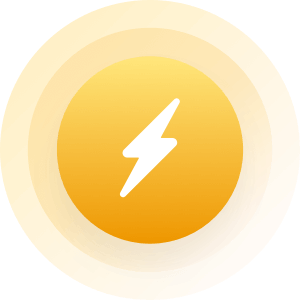| Topic: Hazards of Compact Fluorescent Bulbs | |
|---|---|
|
A few months ago we had a discussion here about CFLs. I said the environmentalists had better address the hazards of the murcury. All the kool aid drinking green kooks got all over my case saying that the advantages of them outweighed the hazard. Well take a look at what I cut and pasted from MSNBC and THINK AGAIN!
By Alex Johnson Reporter MSNBC updated 5:10 p.m. MT, Wed., March. 19, 2008 Compact fluorescent light bulbs, long touted by environmentalists as a more efficient and longer-lasting alternative to the incandescent bulbs that have lighted homes for more than a century, are running into resistance from waste industry officials and some environmental scientists, who warn that the bulbs’ poisonous innards pose a bigger threat to health and the environment than previously thought. Fluorescents — the squiggly, coiled bulbs that generate light by heating gases in a glass tube — are generally considered to use more than 50 percent less energy and to last several times longer than incandescent bulbs. When fluorescent bulbs first hit store shelves several years ago, consumers complained about the loud noise they made, their harsh light, their bluish color, their clunky shape and the long time it took for them to warm up. Since then, the bulbs — known as CFLs — have been revamped, and strict government guidelines have alleviated most of those problems. But while the bulbs are extremely energy-efficient, one problem hasn’t gone away: All CFLs contain mercury, a neurotoxin that can cause kidney and brain damage. The amount is tiny — about 5 milligrams, or barely enough to cover the tip of a pen — but that is enough to contaminate 6,000 gallons of water beyond safe drinking levels, Stanford University environmental safety researchers found. Even the latest lamps promoted as “low-mercury” can contaminate more than 1,000 gallons of water beyond safe levels. There is no disputing that overall, fluorescent bulbs save energy and reduce pollution in general. An average incandescent bulb lasts about 800 to 1,500 hours; a spiral fluorescent bulb can last as long as 10,000 hours. In just more than a year — since the beginning of 2007 — 9 million fluorescent bulbs have been purchased in California, preventing the release of 1.5 billion pounds of carbon dioxide compared with traditional bulbs, according to the U.S. Environmental Protection Agency. “Using them actually reduces overall emissions to the environment, even though they contain minuscule amounts of mercury in themselves,” said Mark Kohorst, senior manager for environment, health and safety for the National Electrical Manufacturers Association. Public, agencies ill-informed of risks. As long as the mercury is contained in the bulb, CFLs are perfectly safe. But eventually, any bulbs — even CFLs — break or burn out, and most consumers simply throw them out in the trash, said Ellen Silbergeld, a professor of environmental health sciences at Johns Hopkins University and editor of the journal Environmental Research. Break a bulb? Five steps for cleanup That was the wrong answer, according to the EPA. It offers a detailed, 11-step procedure you should follow: Air out the room for a quarter of an hour. Wear gloves. Double-bag the refuse. Use duct tape to lift the residue from a carpet. Don’t use a vacuum cleaner, as that will only spread the problem. The next time you vacuum the area, immediately dispose of the vacuum bag. In general, however, the EPA endorses the use of fluorescent bulbs, citing their energy savings. Silbergeld said that could send mixed signals to confused consumers. “It’s kind of ironic that on the one hand, the agency is saying, ‘Don’t worry, it’s a very small amount of mercury.’ Then they have a whole page of [instructions] how to handle the situation if you break one,” she said. Limited options for safe recycling The disposal problem doesn’t end there. Ideally, broken bulbs and their remains should be recycled at a facility approved to handle fluorescent lamps, but such facilities are not common. California is one of only seven states — Minnesota, Ohio, Illinois, Indiana, Michigan and Wisconsin are the others — that ban disposing of fluorescent bulbs as general waste. And yet, qualified recycling facilities are limited to about one per county. In other states, collection of CFLs is conducted only at certain times of the year — twice annually in the District of Columbia, for example, and only once a year in most of Georgia. In fact, qualified places to recycle CFLs are so few that the largest recycler of of fluorescent bulbs in America is Ikea, the furniture chain. I think there’s going to be hundreds of millions of [CFLs] in landfills all over the country,” said Leonard Worth, head of Fluorecycle Inc. of Ingleside, Ill., a certified facility. Once in a landfill, bulbs are likely to shatter even if they’re packaged properly, said the Solid Waste Association of North America. From there, mercury can leach into soil and groundwater and its vapors can spread through the air, potentially exposing workers to toxic levels of the poison. Industry working on safer bulbs Kohorst, of the electrical manufacturers group, acknowledged that disposal was a complex problem. But he said fluorescent bulbs were so energy-efficient that it was worth the time and money needed to make them completely safe. “These are a great product, and they’re going to continue solving our energy problems, and gradually we’re going to find a solution to their disposal, as well,” Kohorst said. In the meantime, manufacturers of incandescent bulbs are not going down without a fight. General Electric Corp., the world’s largest maker of traditional bulbs, said that by 2010, it hoped to have on the market a new high-efficiency incandescent bulb that will be four times as efficient as today’s 125-year-old technology. It said that such bulbs would closely rival fluorescent bulbs for efficiency, with no mercury. |
|
|
|
|
|
Typical for tree huggers. Hey, these are great, EVERYONE should have them!
They always say that about something, and then later we find out that they are worse for the environment or nobody wants them. The whole green movement isn't bad, but they make a lotta bad decisions. |
|
|
|
|
|
Edited by
MCLOVIN4ALL
on
Wed 03/19/08 08:50 PM
|
|
|
I use fluorescent lights all the time and enjoy a low bill. In the three years I used them only one ever had a serious issue but never broke. I don't see it recommended to put them in area where a lamp may get knocked over or if you are prone to dropping things- they aren't for you. The mercury is in most fluorescent bulbs including the circular and long bulbs.
A trick when getting rid of them is if you know they will sit around before being picked up, wrap them in duct tape. This will contain the glass and phosphorescent powder. As for the issue I had, buy name brand higher wattage CFL's. After only 60 days a generic branded CFL shorted out and the filament inside blew up. While the bulb stayed intact it raised concerns about quality and safety if the problem had been worse or no one home when it happened. They are rated to last much much longer. The GE CFL's are fine so far. The original marketing strategy for the bulbs was use in areas that are difficult to get to, really high ceilings, cellars etc. But do whatever suits you. I live in one of those states mentioned we have all kinds of places in the city to get rid of toxic substances. |
|
|
|
|
|
Maybe I'm klutzy, but I broke one and didn't call in a nuke lab. If I get brain cancer not gonna be real happy. Personally, I"m not thrilled with the light they give off.
|
|
|
|
|
|
I like those bulbs, what they dont tell you though is that they cause Harmonic Distortions. Basically distortions in the power that travels through your power lines. Utility companies are gonna have a hard time handling this problem when more and more people switch to these bulbs. Computers especially can be effected by harmonic distortion so watch out.
We have been learning about this in my power electronics class. |
|
|
|
|
|
LED bulbs are going to do away with CFLs and incandescents. 1/2 the wattage of CFLs, twice the life span of CFLs, completely safe and don't produce heat. The only problem is that they are expensive. CFLs are around the same price range, but their cost is subsidized 3rd party entities, so they are cheaper to buy. Once the LED bulbs are subsidized, the price will no longer be an issue.
|
|
|
|
|











